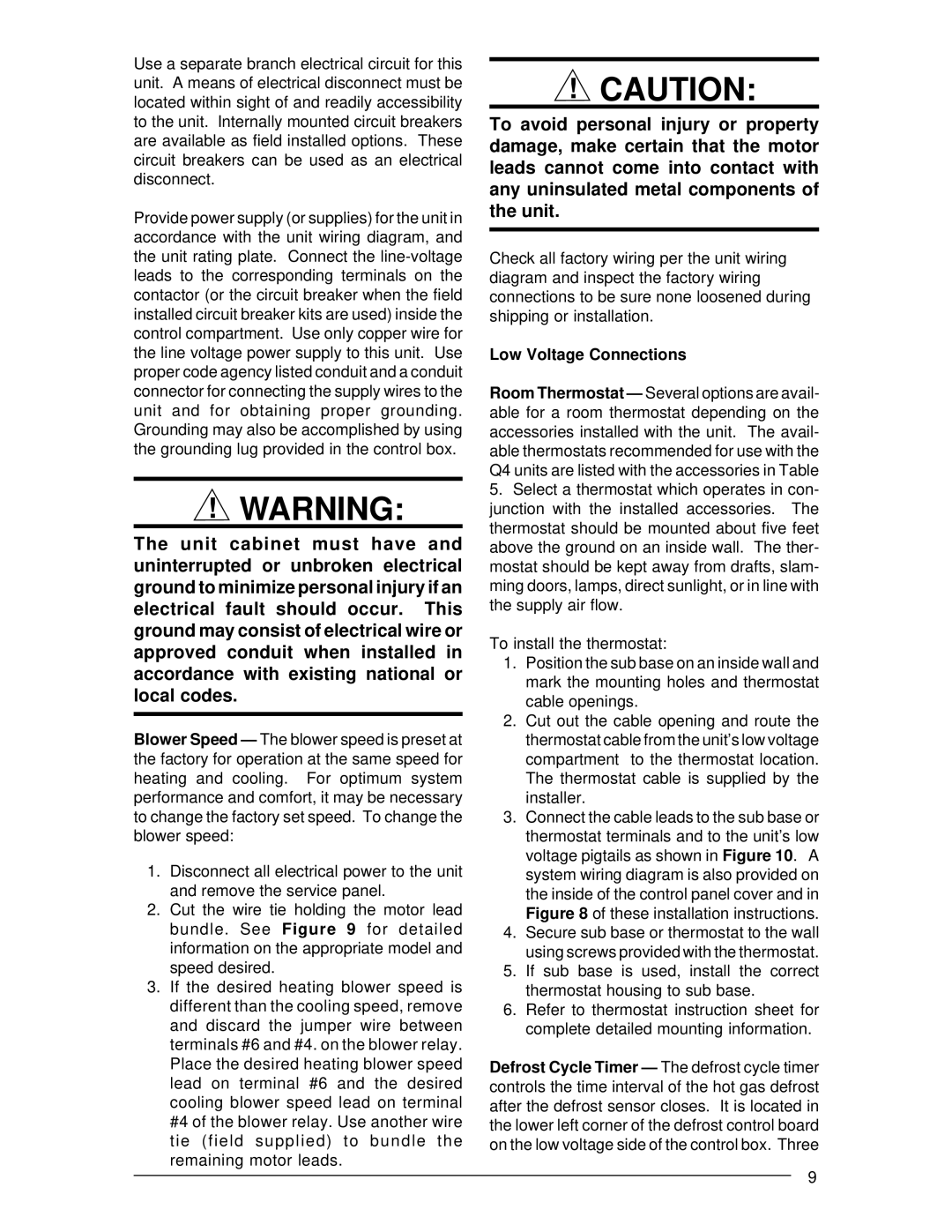
Use a separate branch electrical circuit for this unit. A means of electrical disconnect must be located within sight of and readily accessibility to the unit. Internally mounted circuit breakers are available as field installed options. These circuit breakers can be used as an electrical disconnect.
Provide power supply (or supplies) for the unit in accordance with the unit wiring diagram, and the unit rating plate. Connect the
!WARNING:
The unit cabinet must have and uninterrupted or unbroken electrical ground to minimize personal injury if an electrical fault should occur. This ground may consist of electrical wire or approved conduit when installed in accordance with existing national or local codes.
Blower Speed — The blower speed is preset at the factory for operation at the same speed for heating and cooling. For optimum system performance and comfort, it may be necessary to change the factory set speed. To change the blower speed:
1.Disconnect all electrical power to the unit and remove the service panel.
2.Cut the wire tie holding the motor lead bundle. See Figure 9 for detailed information on the appropriate model and speed desired.
3.If the desired heating blower speed is different than the cooling speed, remove and discard the jumper wire between terminals #6 and #4. on the blower relay. Place the desired heating blower speed lead on terminal #6 and the desired cooling blower speed lead on terminal #4 of the blower relay. Use another wire tie (field supplied) to bundle the remaining motor leads.
!CAUTION:
To avoid personal injury or property damage, make certain that the motor leads cannot come into contact with any uninsulated metal components of the unit.
Check all factory wiring per the unit wiring diagram and inspect the factory wiring connections to be sure none loosened during shipping or installation.
Low Voltage Connections
Room Thermostat — Several options are avail- able for a room thermostat depending on the accessories installed with the unit. The avail- able thermostats recommended for use with the Q4 units are listed with the accessories in Table
5.Select a thermostat which operates in con- junction with the installed accessories. The thermostat should be mounted about five feet above the ground on an inside wall. The ther- mostat should be kept away from drafts, slam- ming doors, lamps, direct sunlight, or in line with the supply air flow.
To install the thermostat:
1.Position the sub base on an inside wall and mark the mounting holes and thermostat cable openings.
2.Cut out the cable opening and route the thermostat cable from the unit’s low voltage compartment to the thermostat location. The thermostat cable is supplied by the installer.
3.Connect the cable leads to the sub base or thermostat terminals and to the unit’s low voltage pigtails as shown in Figure 10. A system wiring diagram is also provided on the inside of the control panel cover and in Figure 8 of these installation instructions.
4.Secure sub base or thermostat to the wall using screws provided with the thermostat.
5.If sub base is used, install the correct thermostat housing to sub base.
6.Refer to thermostat instruction sheet for complete detailed mounting information.
Defrost Cycle Timer — The defrost cycle timer controls the time interval of the hot gas defrost after the defrost sensor closes. It is located in the lower left corner of the defrost control board on the low voltage side of the control box. Three
9
